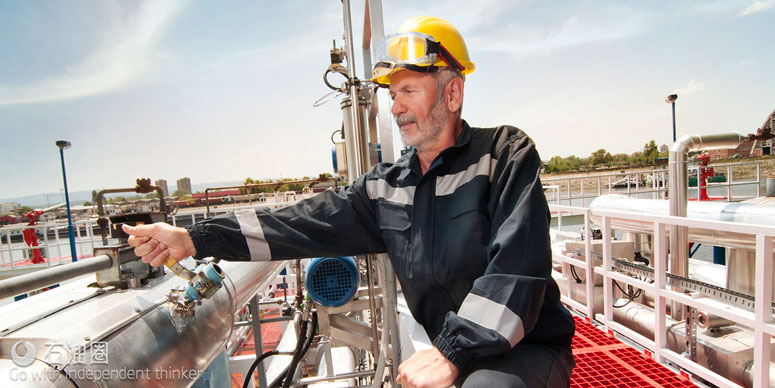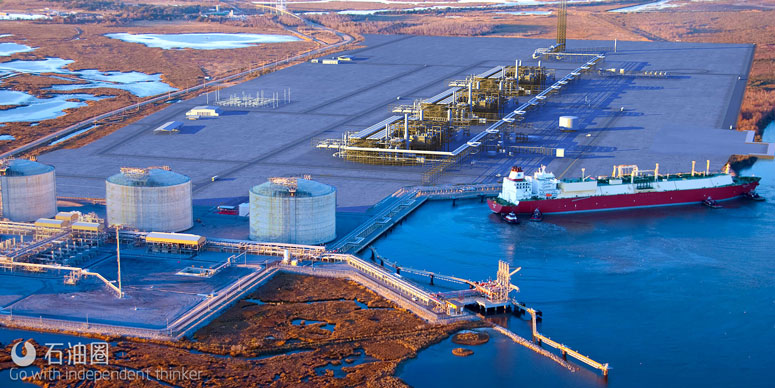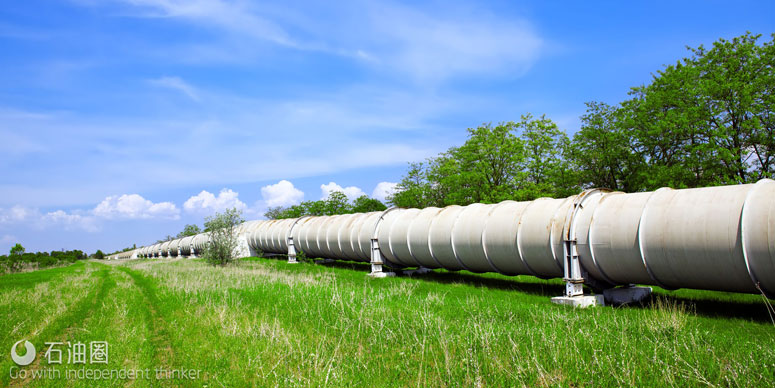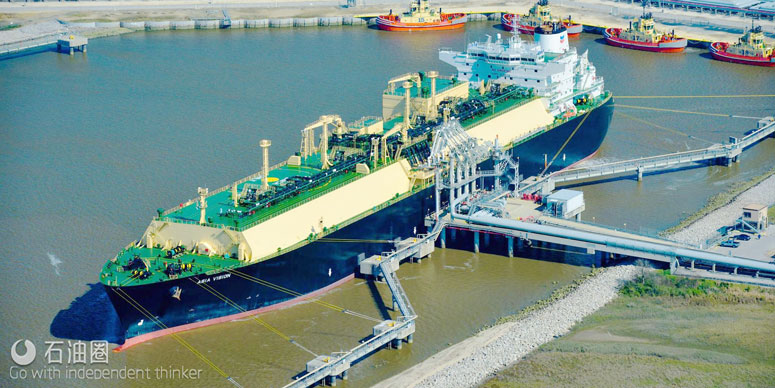In June 2016, a brand new LNG regasification terminal has started its commercial operation in Swinoujscie, Poland. In order to introduce the 5 bcm/a-send-out facility to possible users, GAZ-SYSTEM S.A. (Polish natural gas TSO and owner of the LNG terminal) together with the U.S. Commercial Service organized the ‘Poland: Gateway for U.S. LNG to Central & Eastern Europe’ business conference this October.
In the first half of the conference the focus was primarily on the new terminal, Polish gas market and prominent energy professionals’ outlook on CEE gas markets. While in the second part, U.S. LNG infrastructure developers took the stage. Their panel has been a special event, as six competitor companies (Cheniere Energy, ConocoPhillips, Delfin LNG, Magnolia LNG, NextDecade and Tellurian Investments) introduced their LNG projects. Following the presentations, they sat together at a round table to discuss the prospects of American LNG export. However, each project is unique in its own way; all speakers have shared the same view – the U.S. will soon become a global hot spot for LNG.
Let’s see what I have learned at the conference to be the recipe for success for U.S. LNG projects and what advantages could make them competitive in the long run.
1.) Robust gas reserves in place
There is a lot of gas in the United States. It is well known. But how much exactly? According to the latest EIA estimates the proved reserves of the U.S. are as big as nearly 400 Tcf (over 11,000 bcm). The large scale deployment of horizontal drilling technologies combined with hydraulic fracturing brought a new era to the country’s energy industry. By producing shale formations, the U.S. is soon to become a net gas exporter. There was hardly a speaker who did not mention the fact that shale gas represented an insignificant fraction in the country’s gas mix in the early 2000s, while today its share exceeds 50% (and still growing). Mr. Birger Baltesgard, Global LNG Marketing Manager at ConocoPhillips highlighted that the Marcellus shale itself produces more gas (18 bcf/d) than Qatar, China or Canada.This is not the whole story. According to the speakers, another factor that makes the U.S. hydrocarbon production even more appealing is the royalty system. Land owners possess the rights of the minerals trapped under their field or get a share once a pipeline has been laid in their land. While European folks generally fight against O&G developments and try to get them as distant as possible, American people are incentivized to let energy companies utilize their land. This ensures the gas industry that producers will long be able to access the resources.
2.) Having the infrastructure
‘There are more pipelines than roads in Texas.’ said Delfin LNG CEO Mr. Frederick Jones. The U.S. pipeline network is extremely extensive. Its overall length exceeds 490,000 kilometers and generally there are no conjunctions in the system, transportation bottlenecks do not occur. The gas pipelines mainly belong to and are operated by private companies (i.e. Kinder Morgan, Enterprise Products, Enbridge Energy Partners), they are not exposed to a sudden change in tariffs or regulation. There is no safety net in the system, pipeline operator firms cannot rely on governmental institutions to cover their losses or help them out in case of inefficient operation. The large network of pipelines guarantees a firm feed gas supply for LNG producers.
3.) Competitive gas production
Having large resources is great, but getting the gas out of the rock inexpensively is the silver bullet. U.S. gas formations are generally easy to access; American gas producers do not have to drill down 7000 meters or set up a rig 500 kilometers offshore, their gas is right beneath their feet. Mr. Frederick Jones also said ‘Every time we drill in this country, we find hydrocarbons.’
The natural gas abundance generated a sharp competition between U.S. producers, which forces them to keep their production costs as low as possible. While the number of rigs steeply decreased, the output volume per well grew exponentially in the past 10 years. Mr. John Anderson, Director of the Office of Regulation and International Engagement at U.S. DOE, said at the conference that given the 2015 production levels, ceteris paribus, the U.S. is able to produce gas for the next 25 years below the $3/MMBtu price level.
The United States is the ‘holy land of capitalism’, the country is built on free market and tough competition. This particularly prevails for the O&G industry. There is a lot of gas on the market, and only those will survive who are able to produce larger volumes cheaper, faster and more efficiently.
4.) Well-functioning gas market
Plentiful gas, sufficient infrastructure and inexpensive production: almost everything is provided for a low-cost feed gas for LNG producers. The last pillar is an efficient market place, with a reliable price signal. The Henry Hub is the most liquid gas hub on the world which sets a continental benchmark for the price of natural gas. U.S. LNG producers can physically access to Henry Hub, which ensures companies, that they can always sell/procure gas on its market value. While there are numerous different forecasts on the future evolution of crude oil price, IEA estimates the HH prices will flatten out around $3/MMBtu. This means, the low-priced U.S. gas is not just a spark, but rather the new norm.
5.) Predictable and stable legal environment
Some might argue but the many speakers at the conference have emphasized the stability of the U.S. regulatory system. It is absolutely necessary and they were confident that the U.S. Congress, Federal Energy Regulatory Commission (FERC), U.S. Department of Energy and other related institutions can provide an adequate level of legal certainty and predictability.
6.) Low-cost liquefaction
The LNG liquefaction market is getting fairly saturated. Only in the Lower 48 States, there is almost 90 bcm/a liquefaction capacity under construction and further 18 other projects are on the way. Some of them are in an advanced stage (received all the permits and waiting for final investment decision) while others only exist on the drawing board. One thing for sure, only those projects will manifest which are backed-up with a rock-solid business plan.
In general, liquefaction projects have two main cost components: investment and operational costs. These elements jointly determine whether a project was able to attract investors and get the green light. Sabine Pass LNG, Freeport LNG and Cove Point LNG are brown field projects, they were originally built as import facilities, thus some of their units (e.g. LNG storage tanks) have already been on the site which assisted them a great deal to get the FID.
Green field LNG project developers emphasized their dedication towards driving down capital expenditures and liquefaction costs. Some of them plan to use a self-patented technology, some believe in cost-effective, compact design manufactured and assembled in cheap-labor manufacturing countries, while other investors pay special attention on higher operational efficiency. All these intentions serve the buyer’s interest and support the projects’ commercial viability on the long term.
Furthermore, U.S. liquefaction terminals are conveniently located and easy to access, both during construction and operation phase. For instance, they do not have to operate a remote camp to accommodate their crew. Quoting again Mr. Fredrick Jones’s words ‘Unlike in Australia, you do not have to pay (an annual) $200k to a cook here’.
7.) They know the drill
The Lone Star State has historically been the center of global energy industry. ‘Texas is the petrochemical hot land, where people really understand the O&G business.’ Given this feature, U.S. LNG investors have all the necessary competencies within arm’s reach. As speakers have emphasized, they are not only familiar with the business environment, but they have a long track record and well-established business relations with the major technology providers such as Bechtel, CB&I and CHART.
+1 ) Buyer’s market
Until 2022, LNG importers are in a fortunate situation. LNG liquefaction plant developers do their best to favor investors and potential capacity holders. To do that, they offer customized solutions and exceptional flexibility. However, U.S. LNG developers are currently being open towards every emerging business opportunity. They also warned buyers not to get overconfident, because historically such oversupplied situations have not been as severe, and did not last as long, as it was previously expected. If a company was planning to engage with a U.S. LNG project, probably this is the best time to do that.
All in all, U.S. can provide a low cost gas combined with low cost liquefaction. Operating in a highly competitive business environment with a stable and predictable regulatory background, there is everything set for the U.S. to become an A-list star of the global LNG play. Nothing explains the delegates’ positive outlook better than Magnolia LNG CFO John Baguley’s words: ‘It’s hard to understand why people build (LNG) projects elsewhere.’


 石油圈
石油圈



